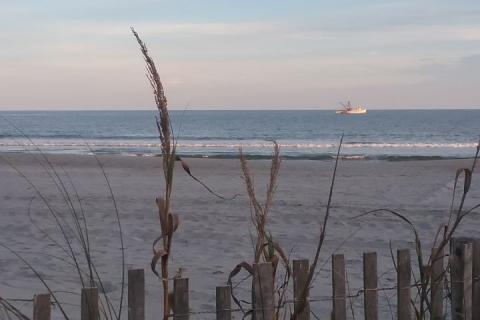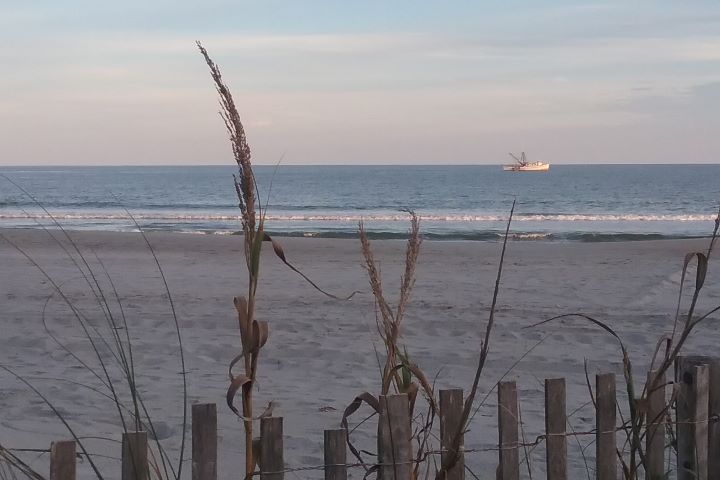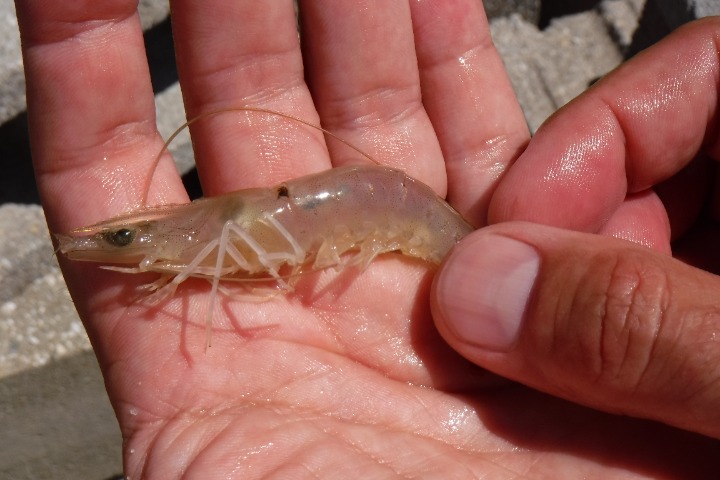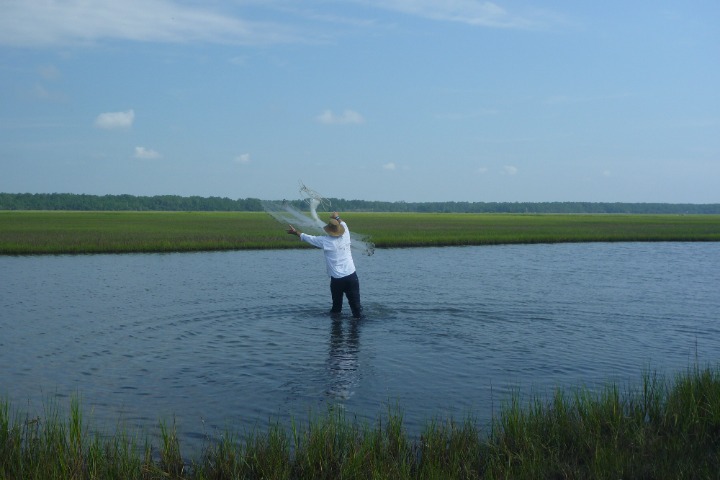
The iterative work among the team’s fishery managers, fishing industry stakeholders, coastal researchers, and educators will forge new collaborative efforts across the southeast U.S. and provide critical information to support the management of this multi-million-dollar fishery.
The commercial shrimp fishing industry contributes millions of dollars to the southeastern Atlantic coastal economy, but for the past two decades, populations of the two species of shrimp that make up the bulk of these landings (white shrimp and brown shrimp) have been highly variable. These populations spend multiple life stages in estuaries and are sensitive to factors such as habitat availability and changes in environmental conditions, including temperature and salinity. Fishery management agencies, extension offices, and reserves in the region have identified the need to better understand how habitat use across shrimp life stages may change with increasingly variable environmental conditions, including warmer winters and altered salinity regimes. These members also identified the importance of communication and outreach to fishing industry stakeholders about why environmental conditions might be less than ideal for shrimp populations in a given year. To meet these needs, this project team will evaluate the effects of changes in various estuarine environmental conditions on shrimp populations and link these with fisher perceptions and changes in the shrimp industry.
The team will leverage NERRS long-term System-Wide Monitoring Program data along with numerous historical monitoring datasets to analyze the effects of varying environmental conditions on shrimp population dynamics. Building on these historical analyses, field sampling across three reserves in the southeast will increase understanding of key shrimp habitat types and how environmental factors such as temperature and salinity impact habitat use, densities, and estuarine-dependent juvenile shrimp vital rates. Manipulative lab experiments will test the effects of inter- and intra-specific competition for limited resources. The team will also conduct interviews to better understand fishers’ perceptions of environmental impacts on the shrimp industry and to guide the development of communication products.
Project Lead Robert Dunn (North Inlet-Winyah Bay National Estuarine Research Reserve) gives an introduction to "Incorporating Environmental Variability into Ecosystem-Based Management for Penaeid Shrimp in the Southeast US," a collaborative research project funded in 2021 by the NERRS Science Collaborative. The presentation was given at a virtual project workshop in January 2022.


